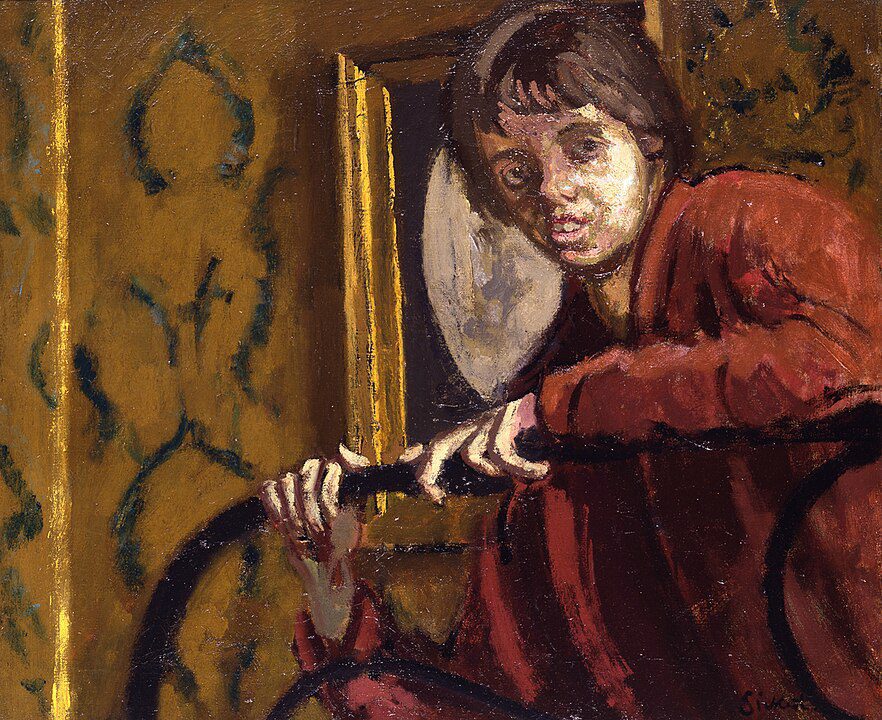
Walter Richard Sickert (1860–1942) was a British painter and influential figure in the late 19th and early 20th centuries. Born on May 31, 1860, in Munich, Germany, to a Danish-German father and English mother, Sickert’s early life was marked by a cosmopolitan upbringing that would later influence his artistic career.
Sickert’s family moved to London when he was a child, and there he began to explore his artistic inclinations. At the age of 18, he entered the Slade School of Fine Art, one of London’s premier art institutions at the time. Under the tutelage of artists such as Alphonse Legros, Sickert honed his skills and developed a keen interest in the works of the French Impressionists. This exposure would have a profound impact on his evolving artistic style.
Moving to Paris
In 1883, Sickert made a pivotal decision to move to Paris, immersing himself in the vibrant art scene of the French capital. He enrolled at the École des Beaux-Arts and frequented the studios of Edgar Degas and James Abbott McNeill Whistler. The influence of Degas, known for his depictions of ballet dancers and everyday scenes, was particularly significant in shaping Sickert’s approach to composition and subject matter.
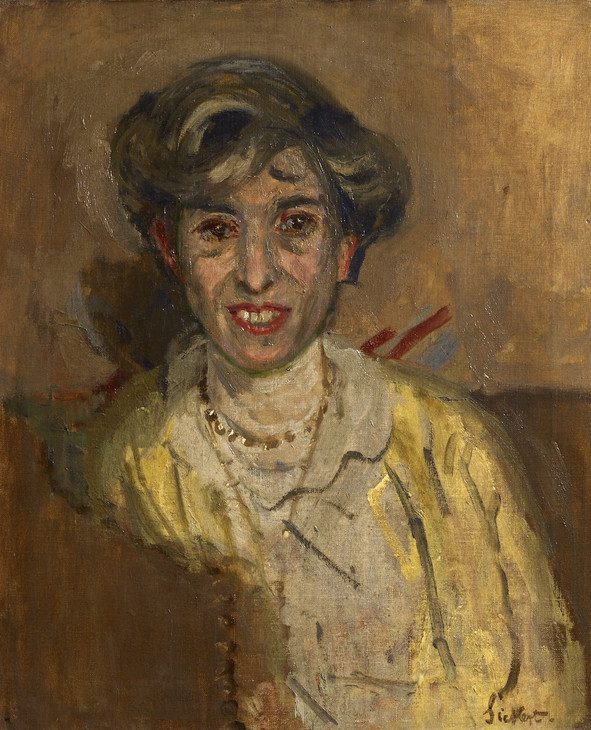
Returning to London in the late 1880s, Sickert found himself at the heart of a burgeoning artistic community. He became associated with the Fitzroy Street Group, a collective of artists interested in experimenting with techniques and challenging traditional artistic norms. This period marked the beginning of Sickert’s exploration into urban scenes and modern life, themes that would define much of his later work.
Sickert’s early artistic career was diverse, encompassing portraiture, landscapes, and scenes of contemporary life. However, it was his association with the Camden Town Group, formed in 1911, that solidified his reputation as a leading figure in British art. The Camden Town Group, named after the area in London where Sickert lived, focused on depicting scenes of everyday life, with a particular emphasis on the urban working class.
One of Sickert’s most renowned works, “Ennui” (1914), exemplifies his fascination with the mundane aspects of modern life. The painting captures a sense of boredom and detachment, featuring a solitary female figure in a sparse interior. The muted color palette and psychological depth of the composition reveal Sickert’s mastery in conveying the complexities of human emotion.
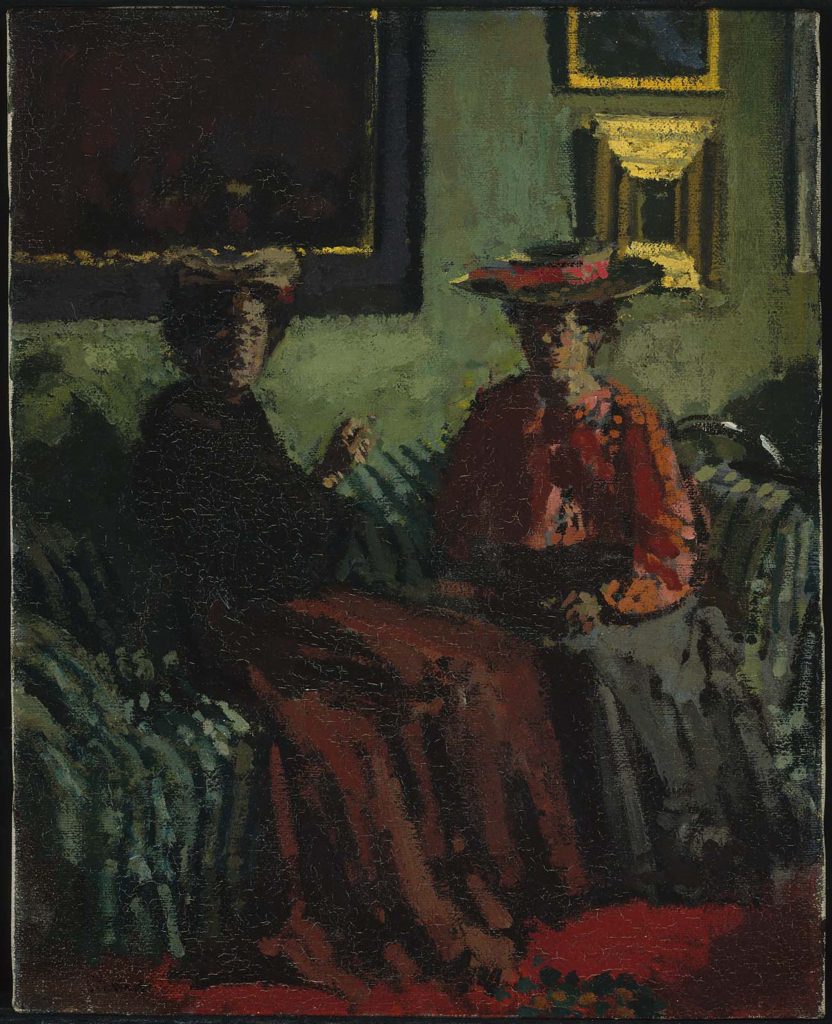
Sickert’s connection to the theater also played a significant role in his artistic output. He was captivated by the dramatic and enigmatic qualities of the stage, often attending rehearsals and performances to sketch and paint scenes from the world of entertainment. His series of paintings depicting the interior of music halls, such as “The Old Bedford” (1894), offer a glimpse into the vibrant and sometimes gritty atmosphere of London’s entertainment venues.
Controversy surrounded Sickert’s work, not only for his unconventional subject matter but also for his association with the infamous Jack the Ripper case. Sickert’s interest in crime scenes and his series of paintings known as the “Camden Town Murder” series (1908-1909) led to speculation about his potential involvement in or knowledge of the unsolved murders. However, these claims remain speculative and have not been substantiated.
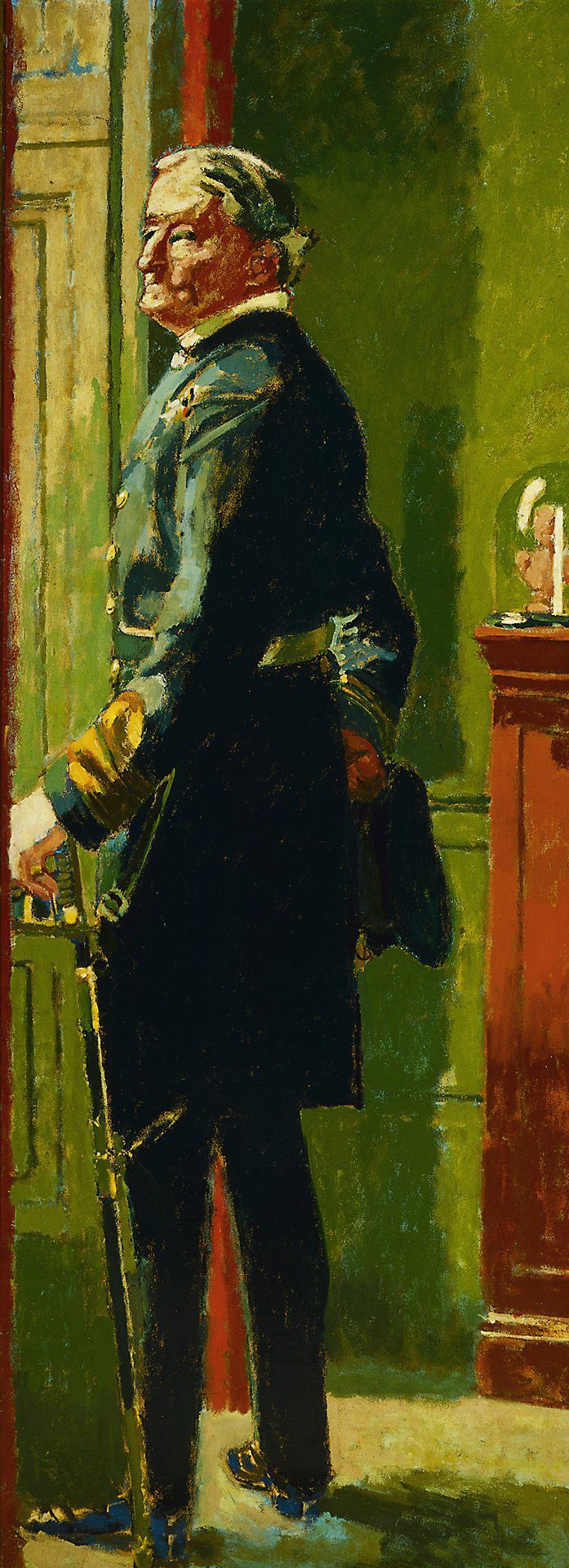
Throughout his career, Sickert continued to evolve as an artist. His later works, characterized by looser brushstrokes and a more atmospheric approach, demonstrate an ongoing engagement with the changing currents of modern art. The influence of Post-Impressionism and the burgeoning movement towards abstraction can be seen in paintings like “The Studio: A Modern Olympia” (1929), where he explored themes of artistic creation and the artist’s relationship with the model.
Helping Artists
Walter Sickert’s impact on the art world extended beyond his canvases. He became a charismatic and influential teacher, guiding the next generation of artists. His writings, including the influential “A Free House!” (1914), provided insights into his artistic philosophy and perspectives on the role of the artist in society.
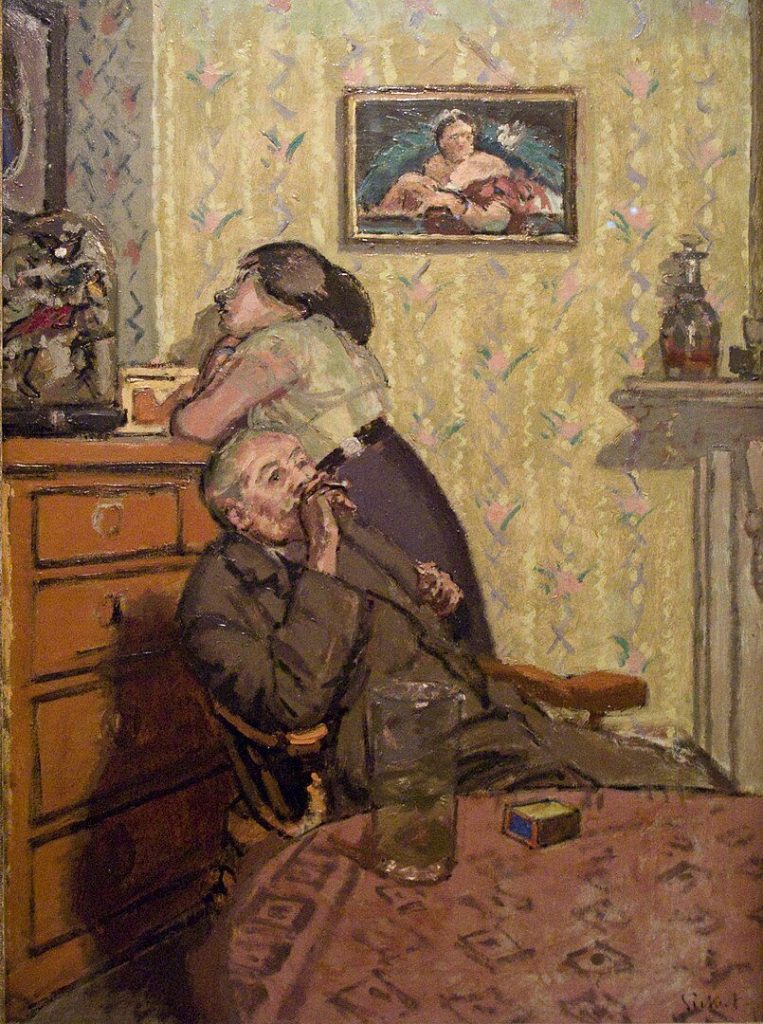
As World War II approached, Sickert’s health deteriorated, and he passed away on January 22, 1942, in Bath, England. His legacy endures, not only through his diverse body of work but also through the artists he inspired and the debates he sparked within the art community. Walter Sickert’s ability to capture the nuances of modern life and his willingness to challenge artistic conventions make him a pivotal figure in the transition from the 19th to the 20th century in British art.




